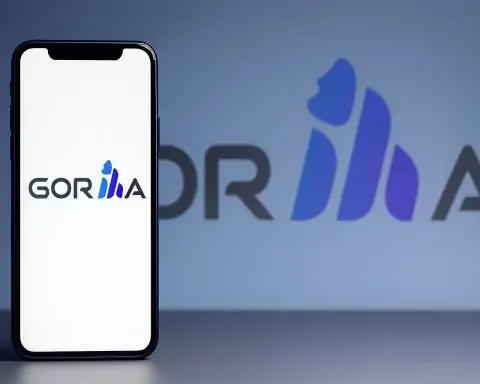- Traditional GEO satellite internet sends data roughly 22,000 miles to a satellite and back, yielding a round-trip latency of about 600–800 ms.
- Satellite internet can reach virtually anywhere with a clear view of the sky, including most of the continental United States.
- HughesNet uses geostationary satellites and advertises speeds up to 25 Mbps download and about 3 Mbps upload on all plans.
- Viasat offers downloads from roughly 12 Mbps up to 100 Mbps with uploads around 3 Mbps.
- Starlink uses a low-Earth orbit constellation and typically provides 50–200 Mbps download and 20–40 Mbps upload with latency around 20–40 ms.
- Amazon’s Project Kuiper plans 3,236 LEO satellites and received FCC authorization in 2020; as of 2025 it is not live.
- GEO installations usually require a professional technician to mount and align the dish, while Starlink provides a DIY kit with a dish, tripod, power supply, and a Wi‑Fi router.
- Data caps vary by provider: HughesNet caps high-speed data at 10–50 GB per month with throttling to 1–3 Mbps; Starlink has no hard caps; Viasat uses soft caps with possible deprioritization.
- Weather can cause rain fade and snow buildup on dishes, sometimes reducing speeds or causing outages, though Starlink dishes may include heaters to melt snow.
- Starlink Roam enables RVs and moving vessels to get internet with an in‑motion dish, with the hardware around $2,500.
Introduction to Satellite Internet
Q: What is satellite internet?
A: Satellite internet is a form of wireless internet access delivered via satellites orbiting the Earth. Unlike cable or DSL, which transmit data through underground wires, satellite internet beams data from ground stations to satellites in space and then down to a dish at the user’s location [1]. This means you can get online in areas where land-based internet isn’t available. Satellite internet is available nationwide and in many remote regions, making it a reliable way for rural homes and businesses to connect online (albeit with some performance trade-offs, discussed later) [2].
Q: How does satellite internet work?
A: Satellite internet works by using radio waves to send data between your location and a satellite. The process involves several steps in a relay network [3]:
- Your device → modem: When you go online (click a link or send an email), your computer or other device sends the request to a satellite modem/router in your home. The modem translates the digital data into a radio signal.
- Modem → satellite dish: The modem sends the signal to the outdoor satellite dish (antenna) at your property, which beams it toward the satellite.
- Dish → satellite: The signal travels ~22,000 miles up to a satellite in space (for traditional geostationary satellites) [4].
- Satellite → ground station: The satellite receives your signal and relays it back down to a ground station(Network Operations Center, or NOC) on Earth that is connected to the internet backbone [5]. This ground station is like an exchange hub between the satellite link and the global internet.
- Internet response back via satellite: The ground station then sends the requested data (e.g. a webpage or video) back up to the satellite, which transmits it down to your home dish. The dish feeds the data to your modem and finally to your device, completing the round trip.
This entire journey to space and back happens in a fraction of a second, but it does introduce more delay than terrestrial (ground-based) internet due to the long distances involved.
Q: Is satellite internet available everywhere?
A: Coverage is one of the biggest advantages of satellite internet. It can reach virtually anywhere on Earth as long as you have a clear view of the sky. In fact, satellite is often the only internet option in many rural or remote areas because it doesn’t depend on local cable or phone infrastructure [6]. The signal is beamed from space, so if you can install a dish pointed at the satellite, you can usually get service. Providers like HughesNet and Viasat cover the continental U.S. (and beyond), and newer services like Starlink are expanding coverage to most of the globe. That said, extreme polar regions or areas with obstructed sky view might have limited service until more satellites cover those zones. In general, if you’re off the grid or far outside city limits, satellite internet is available virtually anywhere you can set up the equipment.
Providers and Availability
Q: Who are the main satellite internet providers?
A: The major residential satellite internet providers (as of 2025) include:
- HughesNet: A long-running provider using geostationary satellites. It’s available nearly everywhere in the US. HughesNet plans offer about 25 Mbps download speeds (with ~3 Mbps uploads) on all plans [7]. It’s known for relatively small data caps (e.g. 10–50 GB of high-speed data per month) but is often the most affordable option and works in very remote locations.
- Viasat (formerly Exede): Another geostationary satellite ISP covering most areas. Viasat offers a variety of plans with downloads from around 12 Mbps up to ~100 Mbps in some regions [8] (uploads ~3 Mbps). It tends to have higher data allowances than HughesNet and higher speed plans, but at a higher cost. Viasat is a good option if you need more speed or data and are willing to pay more.
- Starlink: A newer service from SpaceX using a large low-Earth orbit (LEO) satellite constellation. Starlink delivers much faster speeds (typically 50–200 Mbps download, 20–40 Mbps upload) [9] and dramatically lower latency than the GEO providers. It currently has no hard data caps. The trade-offs are a higher monthly price ($110–$120 for residential service) and an upfront equipment purchase. Starlink’s coverage is expanding as more satellites launch; it’s ideal for those who need better performance in rural areas.
(Coming soon:) Amazon Project Kuiper – Amazon is working on its own satellite internet constellation (Project Kuiper) which is expected to begin service in the near future [10]. Other global initiatives include OneWeb(another LEO constellation, mainly focused on enterprise and mobile backhaul for now) and regional satellite services, but for consumers the big names are Starlink, HughesNet, and Viasat.
Q: What is Amazon’s Project Kuiper?
A: Project Kuiper is Amazon’s planned satellite internet network, designed to rival services like Starlink. It will consist of a large constellation of 3,236 low Earth orbit satellites to provide global broadband coverage [11]. Amazon’s goal with Kuiper is to deliver fast, low-latency internet to tens of millions of people who lack reliable broadband, especially in underserved areas [12]. The project received FCC authorization in 2020 and Amazon has committed over $10 billion to build it out [13]. As of 2025, Amazon has launched a few prototype satellites and plans to launch production satellites starting in 2024–2025. Service isn’t live yet, but once enough Kuiper satellites are in orbit, Amazon will begin offering satellite internet plans similar in concept to Starlink. In short, Project Kuiper is an upcoming competitor in satellite internet – it’s not available to customers today, but it’s on the horizon.
Equipment and Installation
Q: What equipment is needed for satellite internet?
A: To get satellite internet, you will need a few key pieces of equipment (usually provided by the service provider):
- Satellite dish (antenna): A mounted dish installed outside your home, pointed toward the satellite. It’s typically about 2–3 feet in diameter for GEO systems (HughesNet/Viasat) or a flat phased-array for Starlink. The dish sends and receives signals to/from the satellite and must have a clear line of sight to the sky (no heavy tree cover or obstructions in the direction of the satellite).
- Satellite modem: A special modem that connects to the dish (via coaxial cable) and to your indoor network. It modulates and demodulates the satellite signal into usable internet data. The modem is unique to the provider’s network (you must use the one they supply or approve) [14]. In many cases the modem also functions as a router.
- Wi-Fi router (or combo unit): Most modern satellite modems include a built-in Wi-Fi router. If not, you can attach your own router to provide wireless network access in your home. This allows multiple devices (phones, laptops, smart TVs, etc.) to share the satellite connection. (HughesNet and Viasat often provide modem/router combo units; Starlink’s kit comes with a Wi-Fi router as well.)
- Mounting hardware and cables: The dish will come with a mounting bracket or tripod and cables. It might be mounted on your roof, a pole in the ground, or an outside wall. Proper mounting hardware ensures the dish stays securely in place and pointed correctly. Also, a grounding wire is usually installed for lightning protection.
Q: How is satellite internet installed?
A: Installation can vary by provider, but generally:
- For geostationary satellite services like HughesNet or Viasat, a professional technician usually comes to your location to install the dish and modem. The technician will find an optimal spot with a clear view of the southern sky (in the northern hemisphere) and mount the dish there (e.g. on your roof or a pole). They then precisely align the dish to face the satellite’s position in orbit and run a cable into your house to the satellite modem [15]. Professional alignment is important because even a tiny mispointing can degrade the signal. Installation is often either included in startup costs or charged as a one-time fee, and sometimes waived with a contract.
- For newer LEO services like Starlink, the installation is typically DIY (self-install). Starlink ships a kit to you that includes the dish, a mounting tripod or base, power supply, and a Wi-Fi router. You set up the dish outside (e.g. on the ground or mounted on a roof/pole using optional accessories) with a wide view of the sky, and the dish automatically finds and tracks the satellites. The setup process is designed to be simple – essentially “plug and play” – and does not require manual aiming on the user’s part [16]. Many users install Starlink themselves in an afternoon. (There are also third-party mounting kits for RVs, boats, etc., if needed.) With Starlink, you own the equipment, so no ongoing rental fees, but you do pay the upfront hardware cost.
Regardless of provider, clear line of sight to the satellite is crucial. Installation may involve some trial to avoid obstructions like trees or buildings. Once the dish is mounted and aligned, the system is configured and your internet service is activated through the provider.
Performance and Limitations
Q: How fast is satellite internet?
A: Speeds have improved over time, but they depend on the provider and plan:
- Traditional satellite ISP plans (HughesNet, Viasat) offer anywhere from about 10 Mbps up to 100 Mbps download. HughesNet, for example, advertises up to ~25 Mbps download on its consumer plans (and about 3 Mbps upload) [17]. Viasat offers different tiers, ranging roughly from 12 Mbps on lower plans up to 50 or even 100 Mbps on its highest plans in some areas [18].
- Newer low-Earth orbit services like Starlink provide significantly higher speeds – typically 50 to 200 Mbpsdownload, with uploads around 10–40 Mbps [19]. Many users report real-world Starlink downloads in the ~100 Mbps range, which is a big leap over earlier satellites. In some cases, Starlink speeds can exceed 200 Mbps under ideal conditions [20].
- Keep in mind these speeds can fluctuate. Factors like network congestion (peak usage times), your geographic location relative to coverage, and weather can affect performance. Satellite ping times (latency) are higher than terrestrial internet (see below), but pure download throughput can be comparable to basic cable or DSL service, especially with Starlink. Generally, older GEO satellite plans are sufficient for web browsing, email, and streaming video up to HD, while Starlink’s faster speeds support more data-intensive activities (4K streaming, large downloads, etc.) more comfortably.
Q: How much latency does satellite internet have, and why?
A: Latency (ping time) on satellite internet is significantly higher than on wired networks, due to the long distance the signals must travel. For traditional geostationary satellites, latency is typically around 600–800 milliseconds (0.6 to 0.8 seconds) for a round trip [21]. This delay happens because the signal goes ~22,000 miles up to the satellite and 22,000 miles back down – roughly a 44,000 mile journey (even at the speed of light, that adds delay). In comparison, a terrestrial broadband connection might have latency of ~20–40 ms. The high latency on GEO satellites can cause noticeable lag in two-way applications like video calls or online gaming.
Low-Earth orbit satellites have much lower latency. For example, SpaceX Starlink’s LEO satellites have measured latencies around 20–40 ms, similar to DSL or cable internet [22]. This is because the satellites orbit only a few hundred miles up instead of tens of thousands. In summary, latency mainly depends on orbit altitude: the farther away the satellite, the longer the round-trip time. GEO = high latency (~0.5 second or more) [23], LEO = low latency (a few tens of milliseconds) [24]. There isn’t a way to eliminate that physics constraint, other than using lower orbit satellites. (See the LEO vs. GEO section below for more details.)
Q: Does weather affect satellite internet?
A: Yes. Heavy weather can interfere with satellite internet signals. Rain and snow are the biggest factors – a phenomenon known as “rain fade” – where moisture in the atmosphere attenuates (weakens) the radio signal. Moderate to heavy rainor thunderstorms can cause slowdowns or even temporary cut-outs in service [25]. Similarly, thick snow on your dish can block the signal. Usually, light rain or light snow has minimal effect, but a downpour or blizzard might interrupt the connection until it passes. Providers counteract this by using powerful transmitters and resilient frequencies, but during intense weather you might notice reduced speeds or brief outages [26].
In addition, environmental factors like snow buildup or ice on the dish can stop reception (it’s a good practice to carefully clear your dish if it’s safe to do so). Some dishes (like Starlink’s) have built-in heaters to melt snow. Wind can also be an issue if it moves or misaligns your dish – ensuring the dish is securely mounted helps prevent that. The good news is these weather-related disruptions are typically infrequent and short-lived: once the storm subsides, service usually returns to normal. But it’s wise to have a backup plan if you rely on your connection during critical times, just in case extreme weather causes an outage.
Using Satellite Internet for Streaming, Gaming, and Work
Q: Is satellite internet good for streaming video (Netflix, YouTube)?
A: Streaming can work fine on satellite internet, but be mindful of your plan’s limitations. In terms of raw speed, most satellite connections can handle video streaming: standard definition and HD video require roughly 3–5 Mbps and 5–8 Mbps respectively, which even HughesNet’s baseline 25 Mbps can support. Newer services like Starlink, with 50+ Mbps speeds, have no trouble with the bandwidth for streaming. Latency isn’t a big factor for streaming since buffering compensates for delays. However, the big consideration is data caps. Streaming video consumes a lot of data – for example, an hour of HD video might use 3 GB or more. On traditional satellite plans with strict monthly data allowances, heavy streaming can quickly cause you to exceed your high-speed data limit and get throttled to 1–3 Mbps, which will hinder further streaming or cause buffering [27] [28]. In other words, you could watch a few movies and then find your speed reduced.
If your satellite plan has “unlimited” data with a fair use policy (like Viasat’s higher plans or Starlink’s service), you have more leeway to stream without hitting a cutoff. Starlink currently doesn’t enforce hard data caps, so users can stream quite freely. In practice, satellite internet is perfectly capable of streaming Netflix, YouTube, etc., especially on modern systems – just keep an eye on your data usage and perhaps stream in standard definition when possible to conserve data. Many rural users with satellite rely on downloading shows (or using satellite TV) for heavy video consumption to avoid burning through their data. But occasional streaming is absolutely feasible on satellite internet if managed well.
Q: Can you play online games on satellite internet?
A: Online gaming is one of the toughest activities for traditional satellite internet due to the high latency. It’s possible to game, but fast-paced multiplayer games (like first-person shooters or competitive eSports titles) will suffer. With GEO satellite latency often 600 ms or more, the delay (lag) is noticeable – your actions in-game may respond half a second later, which is a big disadvantage [29]. Real-time games that require quick reflexes (Fortnite, Call of Duty, etc.) are frustrating on a high-latency connection. Turn-based or slower online games (puzzle games, strategy games, casual MMOs) are more tolerable because they aren’t as timing-critical.
That said, Starlink’s low-latency service (20–40 ms) has dramatically improved gaming possibilities over satellite [30]. Many users report that with Starlink, online gaming feels similar to a typical cable/DSL connection – you can play shooters, racing games, etc. with only minor differences. The bandwidth on satellite is generally fine for gaming (the data usage for gaming is relatively low), it’s really the ping that matters. So, if you’re stuck with a GEO satellite, you might still enjoy certain games (RPGs, turn-based games, single-player online games) but competitive fast-action gaming won’t be ideal. If gaming is a priority and you have access to Starlink or another low-latency option, that will be the better choice. Otherwise, some gamers on HughesNet/Viasat use workarounds like pre-downloading updates and sticking to less latency-sensitive game modes. In summary: gaming on older satellite = playable but laggy for action games, while new LEO satellite internet has made online gaming quite viable in rural areas.
Q: Is satellite internet good for working from home (video calls and VPN)?
A: Working from home over satellite internet is definitely possible – thousands of people do it – but your experience will depend on the type of satellite connection and your work activities. For normal tasks like emailing, using office suites, cloud services, and general web browsing, satellite internet (even high-latency GEO) works well, just with slightly longer load times. The challenges arise with real-time interactive tools: for example, videoconferencing and certain VPN setups can be sluggish on a traditional satellite link. If you’re on a GEO satellite (HughesNet/Viasat), the ~600 ms latency introduces a noticeable pause in two-way communications. In a Zoom or Teams meeting, you might have to be mindful to not talk over others, because that half-second delay can cause awkward overlaps. It’s manageable – people can get used to the rhythm of a slight delay – but it’s not as seamless as fiber or cable. VPN (Virtual Private Network) connections also tend to be slow over high-latency links; some corporate VPNs may even time out or struggle because satellite latency and packet loss can disrupt them. There are optimization techniques (and HughesNet offers a special VPN acceleration in some cases), but performance will be limited. Large file uploads (e.g. sending big attachments) are also relatively slow on classic satellite due to lower upload bandwidth.
On the other hand, Starlink’s low-latency broadband has made remote work much smoother over satellite. With latency in the tens of milliseconds, Starlink feels more like a terrestrial connection – Zoom and video calls are far more natural and real-time [31], and VPNs generally function without issue at decent speeds. The higher throughput also helps with cloud applications, large file syncing, etc. Many remote workers have reported successfully doing video meetings, software development (using remote servers), and other bandwidth-heavy tasks on Starlink. One should still be prepared for the occasional hiccup – e.g. a brief outage of a few seconds which can happen if the satellite handoff isn’t perfect or if there’s obstruction – but these are infrequent. Overall, for basic work-from-home needs, any satellite link will allow you to get the job done (just plan around the latency), and for intensive collaborative work, the newer LEO services have greatly improved the experience.
Tip: If you rely on satellite internet for work, it’s a good idea to schedule large updates or cloud backups overnight and communicate with colleagues that you might have a slight audio delay in calls. And where available, use Ethernet or a direct connection for your work computer to eliminate any extra Wi-Fi latency. In critical situations (like live webinars), you may also have a backup like a phone hotspot just in case weather affects your satellite at that exact time – but such events are usually rare.
Plans and Pricing
Q: How much does satellite internet cost?
A: Costs for satellite internet are generally higher than for urban cable/fiber, reflecting the expensive infrastructure. Prices vary by provider and plan, but roughly: HughesNet plans might range from about $50 up to $100 per month for residential service [32] (pricing primarily varies by how much data you get, since all HughesNet plans have the same max speed of 25 Mbps). Viasat’s plans tend to be higher – often around $100 to $150+ per month for plans with higher speeds or more priority data [33]. Starlink service is approximately $120 per month for the standard residential plan [34]. (Starlink also has premium options like RV/mobile and business plans that can cost more – anywhere from $150 to $500 per month depending on level of service [35].) These prices are before any applicable equipment fees or taxes. In short, expect to pay on the order of $600–$1200 per year for a typical satellite internet subscription.
Equipment and setup costs: In addition to the monthly fee, you need to account for equipment. Traditional satellite providers often lease you the dish and modem for a monthly rental (about $10-$15/mo) or offer an upfront purchase. Sometimes installation is free with a contract; otherwise there might be an install fee. HughesNet and Viasat usually require a 24-month contract, and often the equipment remains the provider’s property (you return it if you cancel). Starlink, by contrast, sells you the hardware upfront – currently around $599 for the standard kit (dish, router, cables) – with no long-term contract required [36]. You own the Starlink equipment and service is month-to-month. So your initial cost for Starlink is higher, but your ongoing costs are just the service fee. There are no usage-based overage charges on mainstream satellite plans (they won’t charge per GB typically; they’ll just throttle if you exceed your plan’s data). Always check for promotions: sometimes HughesNet or Viasat will have introductory rates (e.g. $50/mo for first 6 months) or free installation deals. But be aware of the standard pricing after promo periods and any early termination fees if you cancel a contract early.
Q: Do satellite internet plans have data caps or limits?
A: Data caps are common on satellite plans, though the specifics differ by provider:
- HughesNet: Yes, HughesNet plans come with a fixed amount of high-speed data per month (10 GB, 20 GB, 30 GB, or 50 GB depending on plan). If you use more than that in a month, you don’t get cut off, but your speed is throttled to about 1–3 Mbps for the remainder of the cycle [37]. They call this the Fair Access Policy. You can buy “Data Tokens” to add more full-speed data if needed, or just wait until next month when your allowance resets. There is also a daily Bonus Zone during off-peak late night hours where usage doesn’t count against your cap, which helps for scheduling large downloads.
- Viasat: Viasat has moved to “soft” data caps on many plans. They might advertise plans as “Unlimited” but with a threshold (like 100 GB, 150 GB, etc.) after which your connection is deprioritized. In practice, if you exceed that amount, your speeds may be slowed during congested times (if the network is busy) [38]. The extent of slow-down varies; during light network usage you might not notice, but at peak times you’ll be among the first to be throttled. Older Viasat plans had hard caps similar to HughesNet, but newer ones emphasize priority data vs. standard data.
- Starlink: Currently has no hard data caps on its standard residential service [39]. Starlink originally was completely uncapped, and as of 2023–2024 they introduced a notional 1 TB “priority” data guideline in some regions (meaning if a user exceeds about 1 TB in a month, they might be deprioritized in favor of other users during congestion). But for typical users, Starlink feels effectively unlimited – there are no overage charges and no shutdowns for high usage [40]. You can stream and download without watching a meter, which is a big difference from GEO providers. Business and mobile Starlink plans may include a certain amount of “priority data” and then switch to standard data, but again no hard cutoff.
In summary, older satellite plans are quite restrictive with data, while newer ones are more lenient. Always clarify with the provider: “Unlimited” can have fine print. If you have a data-limited plan, you’ll want to budget your usage (for example, do big updates or downloads during bonus zones or get a higher-tier plan if you consistently hit the cap). Exceeding a cap typically results in slower speeds rather than extra fees, but those slow speeds (like 1 Mbps) will severely limit what you can do online [41]. Starlink’s approach is currently the most user-friendly regarding data: average consumers won’t need to worry about usage caps on Starlink at this time.
Comparison with Other Internet Options
Q: How does satellite internet compare to DSL, cable, fiber, and cellular internet?
A: Satellite vs. other internet technologies: Each type of internet has its pros and cons, especially when it comes to speed, latency, availability, and reliability. Here’s a quick comparison:
- Satellite Internet: The biggest advantage is availability – it can reach rural and remote areas where no other broadband is available [42]. You don’t need phone lines or cable lines; if you can see the sky, you can often get satellite. It’s truly nationwide (and global) in coverage. However, satellite has higher latency than any wired service (due to the long-distance signals) and historically came with lower speeds and strict data caps [43]. Newer satellite services (Starlink) have improved speed and latency significantly, but satellite is still generally more expensive per month and can be affected by weather. Satellite is a great solution where nothing else works, but if you have a ground-based option, that might offer better performance.
- DSL (Digital Subscriber Line): DSL runs over telephone lines. It’s widely available in many areas (including some rural regions), but the speeds depend on your distance from the phone company’s central office. Typical DSL speeds range from a few Mbps up to ~100 Mbps (for newer VDSL or short loops), but many DSL lines in rural areas might be 5–20 Mbps. Latency on DSL is low (ping 20-50 ms, good for gaming). DSL is usually cheaper than satellite and not affected by weather. However, DSL performance can be poor if you are far out (it might barely meet broadband speeds), and some remote areas don’t have the infrastructure at all.
- Cable Internet: Cable broadband (from cable TV companies) is common in suburban and urban areas. It uses coaxial cable and offers much faster speeds than DSL typically – commonly 100 Mbps to 300 Mbps, and up to 1 Gbps on newer DOCSIS systems. Latency is low (often 10-30 ms). Cable is not available in most rural areasbeyond towns, since it requires cable network build-out. Where available, it’s generally superior to satellite in speed and consistency. One potential downside is that cable networks are shared among neighbors, so at peak times speeds might slow if many people are online (though this is less of an issue with modern systems). Cable usually has higher data caps or none at all, and costs are moderate (often $50–$100/month range). In short, if you can get cable, it will outperform satellite in most cases – but cable coverage doesn’t extend to truly remote locations.
- Fiber-Optic Internet: Fiber is the gold standard of internet connections. It uses optical fiber cables to deliver gigabit-speed internet (1000 Mbps or even higher, with symmetric upload/download). Latency on fiber is extremely low (sometimes <10 ms). It’s also highly reliable and not susceptible to electrical interference or weather. The con is limited availability – fiber has been rolled out primarily in cities or dense areas, and many rural areas have no fiber access at all [44]. Where available, fiber is typically the best option for performance (great for streaming, gaming, work, everything). It’s often reasonably priced for what you get (some municipal fiber or Google Fiber plans in cities are $70/mo for 1 Gbps, for example). But it’s the least likely option to be available off the beaten path. Satellite can reach places fiber can’t economically go.
- Cellular / Wireless Internet: This includes 4G LTE and 5G home internet or mobile hotspots. These services use the cellular phone network. In some rural areas, a fixed wireless or cellular-based internet might be available from companies like Verizon, T-Mobile, or local wireless ISPs. Speeds can range widely – older 4G LTE might be 10–50 Mbps, while 5G can reach 100–300 Mbps or more under good conditions. Latency is low (comparable to DSL/cable when signal is good). Availability is expanding, but you need to be within range of a cell tower with capacity; truly remote areas might have weak or no cell signals, or the data plans might be limited. Many cellular internet plans have higher data allowances than satellite, but some still throttle after a certain amount (e.g. 100 GB) or limit video streaming quality. One advantage is that if you already have cell service, setup is easy (just a modem or using your phone’s hotspot). The downside is that performance can be inconsistent – it might slow down if the tower is congested or if you’re in a fringe area. Cost can be similar to satellite or less, depending on the carrier (some home LTE/5G internet plans are ~$50–$70 per month for “unlimited” data, with fine print on deprioritization). Overall, if you have a strong 4G/5G signal, wireless home internet can be a good alternative to satellite with lower latency and no weather issues. But its availability in remote regions is hit-or-miss – it tends to cover areas closer to towns or highways and not deep wilderness.
In summary: Satellite internet’s unique strength is reaching places other options can’t [45]. In terms of performance: fiber > cable > cellular > DSL > satellite (historically), although Starlink’s satellite service now competes with DSL/cellular speeds and even approaches cable in some cases. Satellite still has the latency disadvantage and usually stricter data policies. Whenever possible, it’s worth checking if a terrestrial service (fiber, cable, DSL, or fixed wireless) is available before settling on satellite, because those will often give a better user experience for the price. But if satellite is your only choice, it’s a capable solution that has gotten progressively better over the years.
History and Future of Satellite Internet
Q: When was satellite internet invented, and how has it evolved over time?
A: Satellite internet as a concept dates back to the mid-late 20th century. Experiments in using satellites for data communication began in the 1970s as satellites started to be used for telecommunication networks [46]. Early efforts were limited by high costs and low bandwidth. The first consumer satellite internet services appeared in the 1990s. Notably, in 1996 Hughes Network Systems introduced DirecPC, the world’s first satellite internet service for home users [47]. Those early services were very slow by modern standards – often you had to use dial-up for uploads and the satellite for downloads, achieving only hundreds of Kbps in practice. Throughout the late 1990s, satellite internet remained a niche with slow speeds and expensive equipment, and as cable/DSL spread, satellite was considered a last resort.
However, technology kept advancing. By the early 2000s, providers launched improved satellites specifically for internet (e.g., Hughes’ DirecWay and later Spaceway satellites, and WildBlue which later became Viasat). Speeds crept up into the single-digit Mbps range. A milestone came in 2007, when Astra (a European satellite) was able to offer about 20 Mbpsservice – one of the first times satellite internet reached what could be called broadband speeds [48]. In the US, ViaSat-1 (launched 2011) and HughesNet’s Jupiter 1 (launched 2012) were high-capacity satellites that enabled plans around 12–15 Mbps. By the late 2010s, Jupiter 2/Echostar XIX and ViaSat-2 pushed speeds further. In fact, 2018saw HughesNet’s Gen5 service (Jupiter 2 satellite) offering 25 Mbps download, finally meeting the FCC’s definition of broadband internet [49]. Data allowances also increased somewhat over time, though they remained a constraint.
A major evolution in satellite internet is happening in the 2020s with the advent of low-Earth orbit constellations and next-gen high-throughput GEO satellites. SpaceX’s Starlink, which began its public beta in 2020, deploys thousands of LEO satellites to provide worldwide coverage. This new approach has already delivered speeds well over 100 Mbps and much reduced latency, fundamentally changing the reputation of satellite internet [50]. Other companies like OneWeb (launched LEO satellites focusing on enterprise connectivity) and Amazon’s planned Kuiper constellation are following suit, signaling a shift toward fast, low-latency satellite broadband on a large scale. On the GEO front, Viasat launched ViaSat-3 (ultra-high capacity satellite) and Hughes is launching Jupiter 3, each aimed at boosting GEO speeds and data capacity (potentially 100+ Mbps plans and more generous data terms for those networks).
In summary, satellite internet has evolved from very slow beginnings (1990s era services only a step above dial-up) to modern systems that can rival DSL or cable speeds in some cases. Key historical points: the first consumer service in 1996 [51], the gradual improvement through the 2000s to reach double-digit Mbps, and the recent LEO revolution bringing broadband-class performance from satellites [52]. It has been a story of overcoming huge technical challenges – latency, limited bandwidth, expensive launches – and each decade brought improvements. Today’s users have options that were science fiction when satellite internet started, and the trend is toward greater capacity, lower latency, and more widespread usage, helping to bridge the digital divide for those far from any wired connection.
Q: How can I improve satellite internet speed or reduce latency?
A: There are a few steps you can take to optimize your satellite internet experience (within the constraints of the technology):
- Optimize your dish setup: Make sure your satellite dish is properly mounted and aimed. If installed by a professional, it should already be aligned, but over time things like wind or storms could nudge it. Ensure the dish has a clear line of sight to the sky (trim any new tree growth that might block it, if possible). A well-aligned dish will get the strongest signal, which helps maintain the best speeds. If you suspect alignment issues (e.g., connection has degraded over time), contact your provider – they might re-peak the dish.
- Minimize in-home bottlenecks: Use a wired Ethernet connection for devices where you need maximum speed or lowest latency (for example, when doing video calls or gaming on a computer). This avoids any extra lag or interference from Wi-Fi. If using Wi-Fi, place your router close to your main work area and reduce interference (e.g., not hiding it in a metal cabinet).
- Limit unnecessary devices and usage: Satellite bandwidth is limited, so if multiple devices are streaming or downloading at once, your experience will slow down. Turn off or disconnect devices that you’re not using from the network [53]. Avoid downloading large files or updates during times you need the connection for critical tasks. Many routers allow you to prioritize certain traffic or devices – using those QoS (Quality of Service) settings can ensure, for instance, your work laptop gets priority over a kid’s video stream during the workday.
- Watch your data usage: If your plan has a data cap or threshold, managing your data is crucial to maintaining speed. Once you exceed your priority data, speeds will drop dramatically [54]. To avoid this, monitor your monthly usage via the provider’s app or usage meter. If you’re always hitting the cap, consider upgrading to a plan with more data or see if the provider offers bonus zones (off-peak free data periods) for large downloads. In a pinch, providers like HughesNet and Viasat allow you to purchase extra data tokens to restore full speed if you’ve been throttled [55] – it’s an added cost, but it can help in an emergency. (Starlink users currently don’t have caps to worry about, but users of capped plans should budget their streaming and cloud backups accordingly.)
- Reducing latency: There isn’t much you can do to improve the inherent satellite latency on GEO systems – you can’t change the laws of physics. Using performance-enhancing proxies or TCP acceleration (which some satellite providers build into their modems) can slightly improve page load responsiveness, but the 600+ ms baseline will remain. If low latency is critical for you (for gaming or real-time stock trading, etc.), the only solution is to switch to a low-Earth orbit provider if available (e.g., Starlink) which naturally has lower ping times. On your local network, you can ensure nothing like a big upload is saturating your connection (which would add lag). Also, some VPN protocols introduce extra overhead – if you must use a VPN over satellite, choosing a faster protocol (like WireGuard) might help a bit.
In short, get the installation right, eliminate avoidable sources of slowness, and work within your plan’s limits. While you can’t make a GEO satellite ping as quick as fiber, you can make sure you get the best possible performance that your service allows. And as newer satellite options come online, consider upgrading to those for better speed/latency if you need it.
Q: Can I get satellite internet for free?
A: No, there is no genuine free satellite internet service for consumers (as of now). All major providers require a paid subscription and their specialized equipment – running satellites and ground infrastructure is very costly, so service isn’t something that can be given out for free. Beware of anyone advertising “free satellite internet,” as it’s likely a scam or misinformation [56]. You’ll at least have to purchase equipment and a service plan. The closest things to “free” satellite internet have been in very specific scenarios: for example, during the Ukraine conflict, SpaceX provided Starlink terminals and service free of charge to areas that had lost internet [57], and some disaster relief efforts or government programs have funded satellite internet for communities in need. But these are special cases. There’s also a service called Outernet/Othernet that broadcasts some data via satellite for free (one-way, like news or educational content), but it’s not a full interactive internet connection. For all practical purposes, if you want satellite internet for home use, you should expect to pay the regular fees. If cost is a barrier, check if you qualify for any government broadband subsidies or see if a cellular hotspot (with a cheaper data plan) could meet your needs. But currently, no satellite company offers free internet access to the general public – the equipment alone costs hundreds, and the satellites cost millions to launch and operate, so they recoup that through subscription fees.
Q: Can I use satellite internet in an RV or on a boat?
A: Yes, it’s possible to get satellite internet on the go – especially now with newer technologies – but there are a few considerations. Traditionally, satellite internet was fixed-location only. Services like HughesNet and Viasat require you to register a service address and aim at a specific satellite beam; if you traveled far outside that area, the service wouldn’t work without re-aiming and re-authorizing (and the dishes aren’t easy to re-point on the fly). Some RV enthusiasts did carry portable satellite dishes to set up at campsites, but it required manual alignment at each stop and you couldn’t use it while moving [58]. Similarly for boats, legacy solutions involved very expensive stabilizing satellite antennas to use GEO satellites – usually only justified on ships or yachts with big budgets.
Today, mobile satellite internet is much more attainable thanks to Starlink and related innovations. Starlink offers a service specifically for RVs/roaming (now called “Starlink Roam”). With Starlink, you can take the dish with you and get internet wherever you have coverage – there’s no concept of being tied to one beam. You can set the Starlink dish up at a campsite and it will connect automatically. They even introduced a flat high-performance Starlink dish that can be mounted on an RV or boat to use in-motion (it can track satellites on the move). Users have reported successfully streaming and working while driving down highways or sailing with these setups. Do note that the mobile hardware and plans cost more (the in-motion capable dish is around $2,500, and maritime plans can be several hundred dollars a month), but basic RV plans (stationary use) are closer to the standard $120/mo in many cases.
For an RV, you now have the option to park anywhere and have broadband, which is a game-changer for digital nomads. Just remember that obstructions like trees or canyon walls can block even Starlink – you still need a view of the sky. For boats, especially coastal or lake use, Starlink works if within roughly 100 miles of coast (for ocean-going vessels, Starlink has separate maritime service). Traditional marine satellite internet (from Inmarsat, KVH, etc.) exists too, but it’s extremely costly and slow (mostly used for basic email/voice at sea). Starlink is rapidly becoming the go-to for boaters who want real internet on the water.
In summary, using satellite internet on RVs/boats is feasible:
- If you need connectivity while stationary (parked or anchored), you can use consumer satellite options (some people use a regular Starlink dish at each stop).
- If you want connectivity while in motion, you’ll need specialized gear (like Starlink’s in-motion dish or a professional-grade auto-pointing antenna for GEO satellites).
- Always secure the dish and follow the provider’s terms (Starlink Roam, for example, allows use across regions, but if you leave your home country for too long or enter unsupported countries, there are some limitations).
The bottom line: the era of reliable internet in an RV or boat is here, thanks largely to the new LEO satellite services. It’s no longer restricted to stationary use or prohibitively expensive maritime systems. For anyone traveling off-grid, satellite internet can keep you connected as long as you manage the equipment and subscription appropriately.
Q: What is the difference between LEO and GEO satellites in internet service?
- Diagram comparing low-Earth orbit vs geostationary orbit satellite positions.
Geostationary (GEO) satellites orbit about 22,000 miles above the Earth’s equator and remain fixed relative to a point on Earth (they orbit at the same rate the Earth rotates). A GEO satellite essentially “parks” over one spot. Because they are so high up, each GEO satellite covers a huge area – just three GEO satellites can blanket most of the Earth (aside from polar regions). For instance, one GEO can cover the entire continental US. This means you don’t need many satellites for global coverage (historically, companies use a handful of big satellites) [59]. The downside is the distance: signals take ~0.25 seconds to go up or down, resulting in ~500–700 ms latency for a round trip [60]. Also, a GEO satellite’s capacity (bandwidth) is shared by everyone using it under that big footprint, so speeds per user used to be low (though newer high-throughput GEO satellites have much more capacity than older ones). Examples: HughesNet and Viasat use GEO satellites, as do satellite TV services. Your dish for GEO points at a fixed spot in the sky. GEO satellites are large, expensive ($100M+ each), but you only need a few to run a worldwide network (however, capacity can be a constraint since each one serves so many people). - Low Earth Orbit (LEO) satellites orbit much closer to Earth, often between about 300 to 1,200 miles high [61]. Because they’re not fixed in one spot, they move quickly across the sky. From a user’s perspective, a given LEO satellite is in view only for a few minutes at a time, then another takes over, and so on. To provide continuous coverage, LEO systems require a constellation of many satellites orbiting in coordination [62]. The big benefit is the shorter distance: latency can be as low as 20–40 ms, nearly on par with terrestrial internet [63]. Also, each satellite covers a smaller area at a time, which can mean more bandwidth per user in that area (and the network can spatially reuse frequencies). LEO satellites hand off connections as one moves out of view and another comes in – all seamlessly managed by software and user antennas that track them. Examples: SpaceX Starlink (which plans for 12,000+ satellites), OneWeb (planned 648 satellites) are LEO constellations for internet. LEO satellites are smaller and cheaper individually than GEO, but you need a lot of them. They also require a dense network of ground stations and advanced software to manage the moving network. The complexity is higher, but the performance is better (low latency, high speed) and coverage can eventually be truly global (including polar areas, which GEO can’t cover well).
In summary, GEO vs LEO: GEO satellites = very high altitude, stationary relative to Earth, thus need only a few satellites and simple fixed user antennas, but with high latency and potential capacity limits. LEO satellites = low altitude, move across the sky, requiring many satellites and tracking antennas, but offering low latency and the ability to serve many users with higher throughput per person. There are also MEO (Medium Earth Orbit) systems at intermediate altitudes (e.g., around 5,000–12,000 km up) which try to balance these factors – an example is the O3b network at ~8,000 km altitude, which has latency around 150 ms and is used for telecom backhaul in remote areas. But for consumer internet, the main approaches in 2025 are GEO (incumbent) and LEO (emerging). Each orbit has its niche: GEO is proven and reliable for broad coverage (and is great for TV broadcasting, etc.), while LEO is cutting-edge for low-latency, high-speed connectivity. Future networks might even hybridize the two to get the best of both worlds [64] [65].
References
1. www.satelliteinternet.com, 2. www.satelliteinternet.com, 3. www.satelliteinternet.com, 4. www.satelliteinternet.com, 5. www.satelliteinternet.com, 6. www.satelliteinternet.com, 7. www.rsinc.com, 8. www.rsinc.com, 9. www.rsinc.com, 10. www.satelliteinternet.com, 11. en.wikipedia.org, 12. en.wikipedia.org, 13. en.wikipedia.org, 14. www.rsinc.com, 15. www.rsinc.com, 16. www.rsinc.com, 17. www.rsinc.com, 18. www.rsinc.com, 19. www.rsinc.com, 20. www.rsinc.com, 21. www.rsinc.com, 22. www.rsinc.com, 23. www.telarus.com, 24. www.telarus.com, 25. www.starlink.com, 26. www.starlink.com, 27. www.satelliteinternet.com, 28. www.rsinc.com, 29. www.rsinc.com, 30. www.rsinc.com, 31. www.rsinc.com, 32. www.satelliteinternet.com, 33. www.satelliteinternet.com, 34. www.satelliteinternet.com, 35. www.satelliteinternet.com, 36. www.satelliteinternet.com, 37. www.rsinc.com, 38. www.rsinc.com, 39. www.rsinc.com, 40. www.rsinc.com, 41. www.rsinc.com, 42. getinternet.com, 43. broadbandnow.com, 44. getinternet.com, 45. getinternet.com, 46. www.rsinc.com, 47. www.hughesnet.com, 48. broadbandnow.com, 49. broadbandnow.com, 50. www.telarus.com, 51. www.hughesnet.com, 52. www.telarus.com, 53. www.satelliteinternet.com, 54. www.satelliteinternet.com, 55. www.satelliteinternet.com, 56. discussions.apple.com, 57. discussions.apple.com, 58. www.satelliteinternet.com, 59. www.telarus.com, 60. www.telarus.com, 61. broadbandnow.com, 62. www.telarus.com, 63. www.telarus.com, 64. www.telarus.com, 65. www.telarus.com










